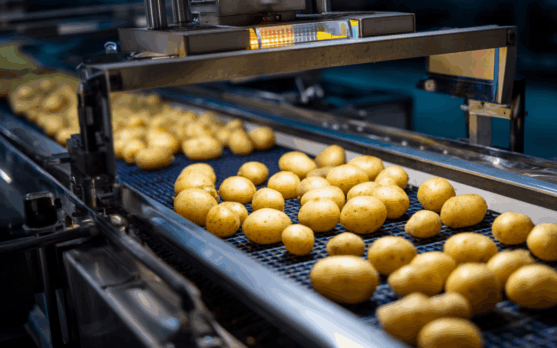Frozen Artisan Pastries: Gourmet Convenience Hits 2025
You walk into a supermarket bakery section, and instead of seeing the usual frozen croissant, you spot pastries that look like they belong in a Paris patisserie. Pistachio frangipane, kraft-chocolate-dipped croissants—frozen? Yep, frozen. Welcome to 2025’s surprising shift: artisan-level frozen pastries. It’s not a trend, it’s a full-on movement. And it’s reshaping how food brands market and package convenience.

How Frozen Got Fancy, Fast
Remember when hot-tray pastries were considered “fresh”? That was five years ago. Now, major suppliers wearing white coats and serious R&D labs are touting frozen pastries that taste—and feel—boutique. Flaky, buttery, even flaky enough to fool a trained palate. I tasted one last week: a raspberry-almond croissant that, straight from a home oven, broke apart like a real pâtisserie creation. Here's the kicker: it was frozen beforehand. And it wasn’t alone on the shelf.
It’s About Ingredients—and Temperature
The secret isn’t just flash freezing (though that helps). Brands are using European-style European butter, free-range eggs, artisanal flours, even heirloom grains. The flash freeze locks those flavors in while gently pausing fermentation. When you pop them in the oven, they bloom. It’s that perfect interplay between art and science—ingredients priced at a premium, packaged cold, baked at home, and promising near-perfect texture and taste. Kind of brilliant, if you ask me.
The Numbers Don’t Lie
Let's talk numbers. The frozen pastry market hit roughly $6 billion globally in 2024. That’s not small change. It’s expected to grow to over $9 billion by 2033—which is a CAGR of almost 5 percent. And here’s what’s interesting: this isn’t mass-market sugar croissants anymore. It's premium lines that are growing fastest. Europe, North America, even parts of Asia—demand is rising for premium bake-at-home products. No wonder cafés and gourmet grocery stores have frozen pastry racks now.
Why Consumers Love Them
We are busier than ever—but we still want good food. Frozen artisan pastries give us that exact hit: convenience *and* quality. Just a few minutes in home ovens or countertop combi-ovens, and voila—fresh-smelling, bakery-level pastries. Plus, because they’re frozen, consumers buy fewer at a time and store them longer—no waste, no trip back to the store because last week's batch turned stale or moldy.
Retailers Are Betting Big
Earlier this year, a major UK supermarket quietly relabeled all their in-store ovens and pastry cabinets with “These items were frozen.” That’s not a slip-up—it’s a statement. They want transparency and consistency. Importantly, flash-frozen goods allow stores to bake throughout the day, minimizing both labor costs and the risk of stale product. Customers love the aroma, but the store avoids waste and staff scheduling headaches. It’s operational gold.
Packaging That Tells a Story
Let’s face it: plastic boxes aren’t sexy. But imagine a kraft-paper sleeve stamped with origin stories—“Handcrafted dough, fermented over 18 hours. French butter from Normandy. Free-range eggs.” All that on packaging that says “Flash Frozen.” The result? It taps into that desire for authenticity—without risking spoilage. It is artisan, yet durable. It makes sense for both brand and buyer.
Challenges in the Flash-Frozen World
Okay, challenges exist. These pastries need specific frozen aisle visibility and constant freezing from factory to shelf. Forecasting demand is slightly trickier—buy too many, you get freezer burn; too few, you disappoint. Plus price inflation: premium ingredients mean higher retail tags. But early adopters agree: customers buy them. And replaceable margins are smaller than the cost of stale stock.
What’s Next on the Shelf
You’ll see more plant-based versions, gluten-free lines, even savory options like frozen croissants filled with cheese and herbs. Small-scale bakeries are entering the frozen partnership space—think hyper-local sourdough croissants, packaged frozen. There’s even talk of single-serve frozen Danish pastries, microwaveable in seconds. Expect innovation in packaging too—biodegradable trays, resealable bags, QR codes linking to chef instructions, pairing suggestions, even playlists. Really.
Takeaway for Producers & Retailers
If you’re in frozen bakery—or packaging for it—this moment matters. Don’t just offer frozen pastries; offer an experience. Invest in quality ingredients, flash-freezing processes, packaging that tells a story, and staff who can sell freshness from frozen. The opportunity is why so many partnerships between tech-driven bakeries and grocery chains have bloomed in the last 18 months. And it's only going to grow.
Conclusion
In 2025, the rise of artisanal frozen pastries signals more than a trend—it’s a new normal. Consumers fatten their baskets not just with convenience, but with products that look and taste like haute cuisine. If your brand or bakery isn’t in that frozen premium niche yet, now’s the time to get in.
Essential Insights
- Premium frozen pastries are surging, combining gourmet ingredients and flash-freezing tech.
- They offer bakery-level experience at home, with minimal waste and strong operational benefits.
- Packaging and storytelling are crucial—buyers expect artisan narratives, even in frozen aisles.
- Retailers benefit from consistent quality, fewer returns, and efficient store operations.




